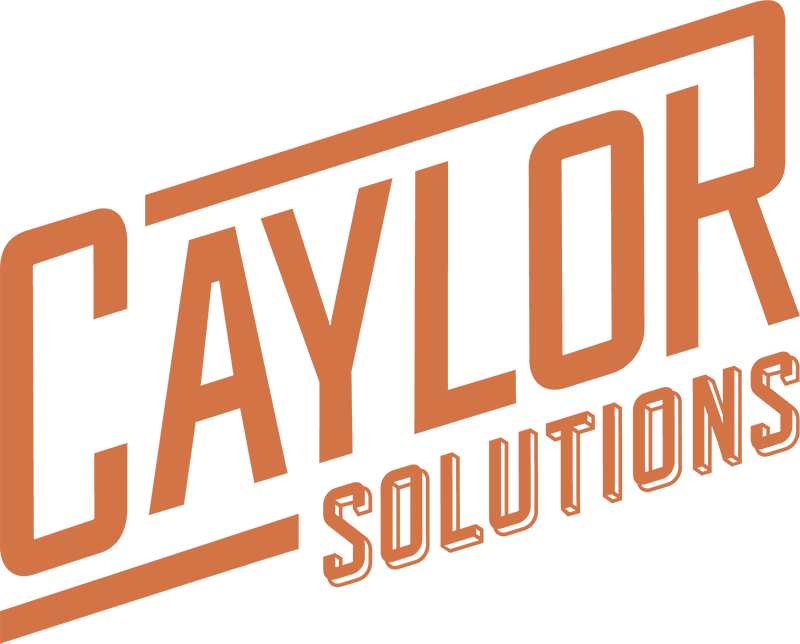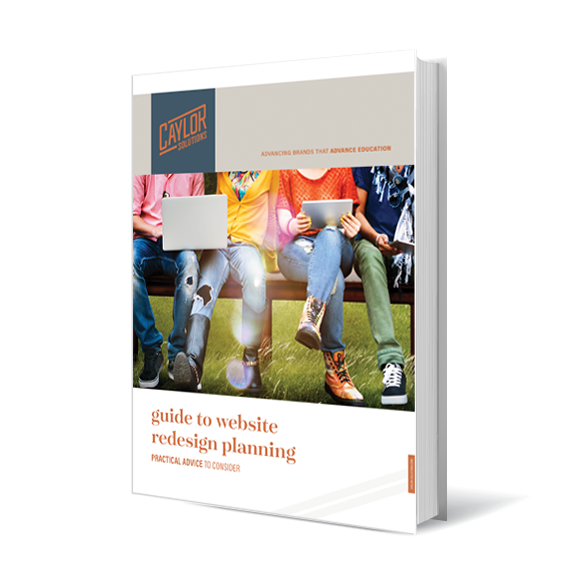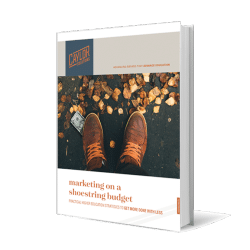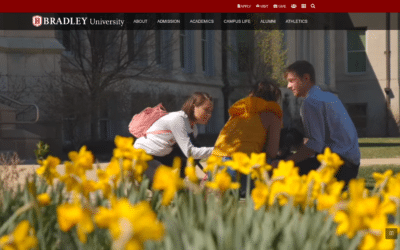By now, your college or university must have some sort of digital marketing strategy. Your question isn’t whether having a digital presence is critical. It’s what to prioritize in terms of marketing and advertising spending.
Should we shift more dollars toward digital and away from traditional?
Digital is important, but will we actually get a better ROI from traditional in the long run?
Or, is traditional a relic of the past? Should we put all our eggs in the digital basket?
Why You’re Fixating on Digital Marketing Strategy
We’ve now had the Internet for over 25 years. With the rise of social media, Big Data, personalized ad targeting and analytic tools have created an incredible amount of power for marketers to increasingly engineer results.
This is why your digital marketing strategy looks so different today from what traditional strategies did 25 years ago. They were much more similar in the beginning (think newspaper ads = digital newspaper ads, TV spots = video ads, etc.).
Now, there’s no comparison.
- A billboard functions nothing like a targeted, clickable, trackable social media ad.
- Direct mail is completely different from personalized, two-way email communications.
- Linear television ads live in a completely different space than YouTube videos.
Digital methods are the brightest, shiniest objects in the room, and for good reason. There are many reasons to argue that a digital marketing strategy should be central to your efforts.
Funny thing, though.
There’s still a lot of money going into traditional marketing and advertising. Why? Why do marketers in general – education marketers like you among them – still use the old methods?
Let’s take a look at current advertising trends, how the COVID-19 pandemic is playing into this, and what the arguments are for where traditional methods should fit into your digital marketing strategy today.
Marketers Are Definitely Leaning Digital
Marketing executives control budgets that represent about 7-10% of their organization’s revenue. Where all that money goes is a good indicator of where they believe they will get the best ROI based on past performance.
According to Statista:
- Since 2015, advertisers have reported a “visible advantage” in digital over traditional.
- Advertisers have been steadily reducing their traditional marketing budgets.
- Investments in mobile marketing (digital geared toward mobile devices) is increasing.
Despite this 5-year trend, there was actually a slight increase in both traditional media and digital spending between February 2019 and February 2020. Traditional marketing as a whole clearly isn’t dead, then.
So what’s going on?
Robbing Traditional to Invest in Digital Marketing Strategy
What is clear is that digital has taken the lead. Personalization is an irresistibly attractive benefit of digital advertising, and money is pouring into the ecosystem that makes it possible.
Marketing directors are shifting dollars into an increasingly elaborate digital marketplace that puts multiple players in action. Take the journey of video ads, for example:
- Agencies establish target demographics and create a digital marketing strategy.
- A boutique marketing shop might create the content and execute the digital campaign.
For distribution to social media platforms, those companies take it from there, providing targeting data and ad placement. But for distribution outside of social media platforms:
- Third-party data providers (such as OnAudience) collect, aggregate and provide demographic targeting data. (Social media companies have their own data, of course.)
- Ad exchanges (such as SpotX) insert ads into display, video and mobile ad inventory slots.
- Inventory owners (such as Hulu, Google, Apple) display the ad on mobile and other connected devices.
Naturally, the new ecosystem is pulling dollars away from traditional campaigns. There has been a strong, steady trend away from:
- Linear TV
- Radio
- Direct mail
- Out-of-home (billboards, etc.)
Meanwhile, paid search engine marketing, social media marketing spending and connected TV (again, Hulu, etc.) have all been steadily on the rise.
The Pandemic Has Tipped the Scale Even Further
If it wasn’t already starting to feel like traditional was getting crushed by digital, the COVID-19 pandemic has only exacerbated the trend.
According to SearchEngineLand.com:
- In 2020, traditional media ad spending is seeing double-digit declines.
- Paid search is up 26%.
- Social media marketing spend is up 25%.
Even before the pandemic, this probably made a lot of sense from your perspective as an education marketer.
You’ve learned a lot about Gen Z, your incoming crop of traditional students – traditional in terms of age, that is, not in terms of how they respond to advertising.
- They don’t have the patience for interruption that older generations got used to when watching old-fashioned TV.
- They appreciate authenticity over flash, preferring a simple, personal email over an elaborate mailer that feels like it’s created for a mass audience.
- Pragmatic, busy entrepreneurs, they value convenience, expecting everything important to them to be effortlessly accessible, and only relevant information pushed to their mobile phone screens.
Most likely, the pandemic only accelerated your shift toward a 100% digital marketing strategy. As recruitment has had to grow increasingly virtual, so have your efforts to feed your enrollment funnel grown necessarily digital.
You leaned on social media and email to market virtual events, non-linear TV to announce new e-learning initiatives, YouTube to educate your audience about precautions you were taking to be able to welcome students safely back to campus this fall.
With the pandemic situation changing week to week – even day to day – you leaned heavily on the fastest, most actionable and trackable tools in your toolbox. Those were digital tools.
So, does all this mean that traditional marketing has lost its value?
Not so fast.
The Case for Traditional Marketing
While it seems like a 100% digital marketing strategy is all you need in the year 2020, there are a few reasons to think again.
Gen Z is Reviving Print
Something interesting is happening among the Gen Z crowd that is setting them apart from their Millennial parents and big siblings (in 2020, now as old as 39).
While they are digital natives and very active online, there are signs that they are also keen to disconnect and read – not screens, but actual print.
Studies have shown that:
- Much of Gen Z value print over digital media over loud, cluttered, digital environments.
- 83% turn to newspapers and 34% to magazines for trusted information.
- 61% of them believe their peers would benefit from “unplugging more.”
If this trend continues, print ads in magazines and everything else in the print ecosystem – direct mail pieces, physical newsletters, etc. – will see a resurgence back to a time before Millennials began to kill print.
Traditional Media Is Respected, Controlled
Social media marketing is certainly effective, but what makes it so is a two-edged sword. Its appeal is that content is user-made. Users aren’t just consumers, they’re contributors.
They aren’t always the kind of contributors you want your ads to appear next to, though.
In these divisive, politically-charged times – exacerbated by political extremists, hate groups, foreign bad operators, etc. – advertisers are increasingly concerned about what their ads will appear next to. Ninety percent are at least slightly concerned, 41% are extremely concerned.
There is a rising awareness that social media platforms are hosting hate speech, fake news, etc., and not doing enough to curb this content. This doesn’t mean you can’t invest in a platform like Facebook, it just means you have to be vigilant, lest this become a political liability for you.
In contrast, you have much more control of where your presence is seen and how it is felt in traditional marketing. Billboard location, television programs, magazine layouts – these are factors you can control.
The perceived value of higher education is dependent on respectability. Despite the pizazz of social media, you can’t beat the respectability of traditional media or the control you have over its use.
Traditional Media is Still Key to Brand Recognition
Donna Lehmann, the vice president of marketing for Fordham University, makes a strong case for continuing to invest in traditional marketing in higher education.
She argues that, while digital marketing is effective – in the sense that it’s targeted, actionable, trackable – it’s far less visible than traditional marketing.
Visible to whom? Everyone who needs reassurance that your institution’s brand is strong.
She argues that we need to remember that enrollment marketing doesn’t happen in a bubble, with you and prospects inside. Other factors – other audiences – drive enrollment and retention, and those audiences are inspired by their exposure to your brand.
These audiences include alumni, donors, business partners, faculty, staff, coaches, current students, and – notably – your administrative board.
“Digital marketing takes the majority of our work out of the public eye … I worry that we are doing our schools a branding disservice by fixating on clicks, and we are doing ourselves and our profession a disservice by hiding our work under a (digital) bushel.” – Donna Lehman, Vice President of Marketing, Fordham University
“Digital marketing takes the majority of our work out of the public eye … I worry that we are doing our schools a branding disservice by fixating on clicks, and we are doing ourselves and our profession a disservice by hiding our work under a (digital) bushel.” – Donna Lehman, Vice President of Marketing, Fordham University
She recommends keeping your work visible through traditional media, not only in the general market but on campus, and being sure to (proudly!) include your work in annual reports.
It may be more difficult to prove ROI, but visibility, awareness and the respectability of traditional advertising are essential tools for brand building, which is vital to the longevity of your institution.
As Lehman put it:
“These days, no school aspires to be their region’s best-kept secret. Brand building should be on everyone’s agenda.”
So, about your ideas to go with a 100% digital marketing strategy … You’ll want to keep a solid investment in its traditional partner.
On this question of digital vs. traditional, the digital marketing experts at HubSpot ask: Why not both?
- Digital drives short-term initiatives, so it’s definitely important. You can endlessly manipulate it, experiment, track results, prove ROI or make adjustments.
- Traditional is well-researched, tried and true, and does not rely on technologies that can fail or have privacy concerns, or platforms that contain troublesome user-generated content.
They can work together to get the same job done. Outdoor ads can drive prospects to your website, digital media can drive prospects to your physical campus, and so on.
On a broader scale, traditional marketing is about creating the environment in which your digital marketing efforts are more likely to succeed long-term.
Maybe we need to stop asking which is better, because both will likely always be with us.
Let’s start asking how they can best work together.
That’s what my team and I help K-12 schools, colleges and universities do. If you need help, let me know. I look forward to connecting with you – whether digitally or traditionally.
Looking for Enrollment Marketing Content that Works?
You’re in luck! We’ve curated 25 awesome ideas inspired by top higher ed institutions across the country and put them in one handy guide: 25 Ideas for Great Admissions Content.

-
- 25 enrollment marketing content ideas you might never have considered before
- Guidance on how to use each one for best results
- Brief discussion on why they work to help you sell these ideas to your team
Get inspired.
Get enrollment results.
Get 25 Ideas for Great Admissions Content.
Download your copy today!
Featured image by MclittleStock via Adobe Stock












